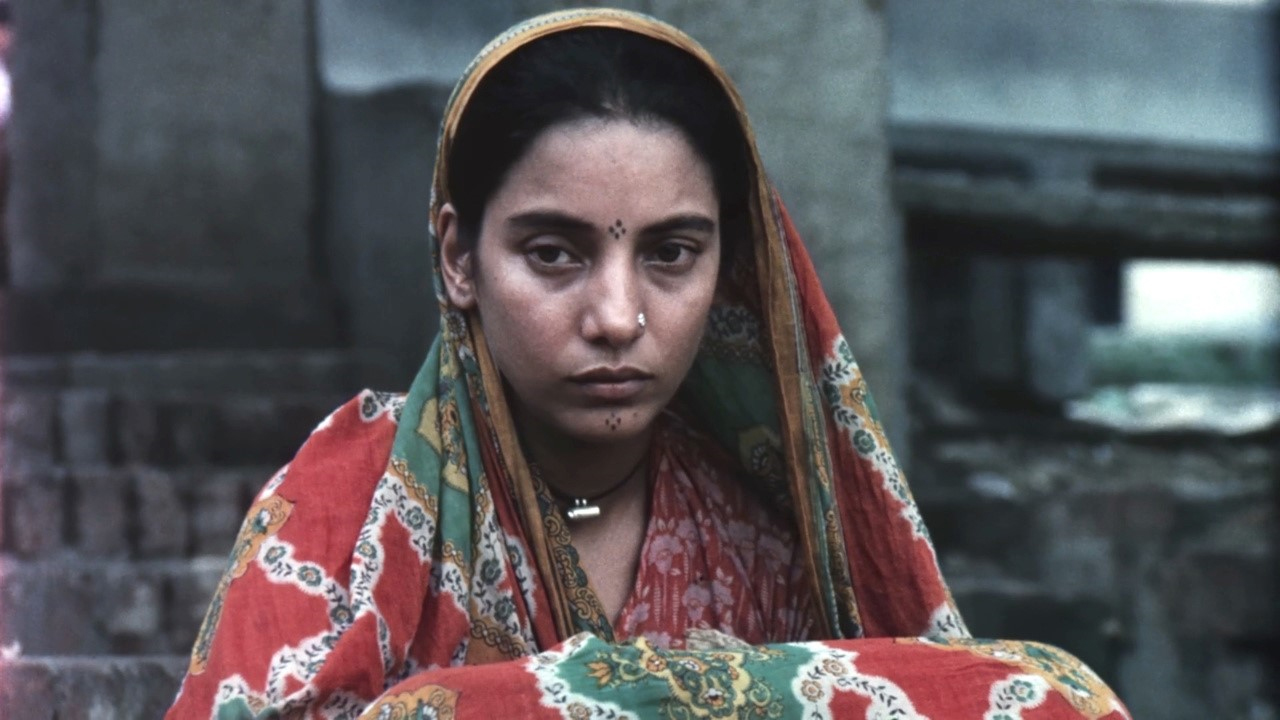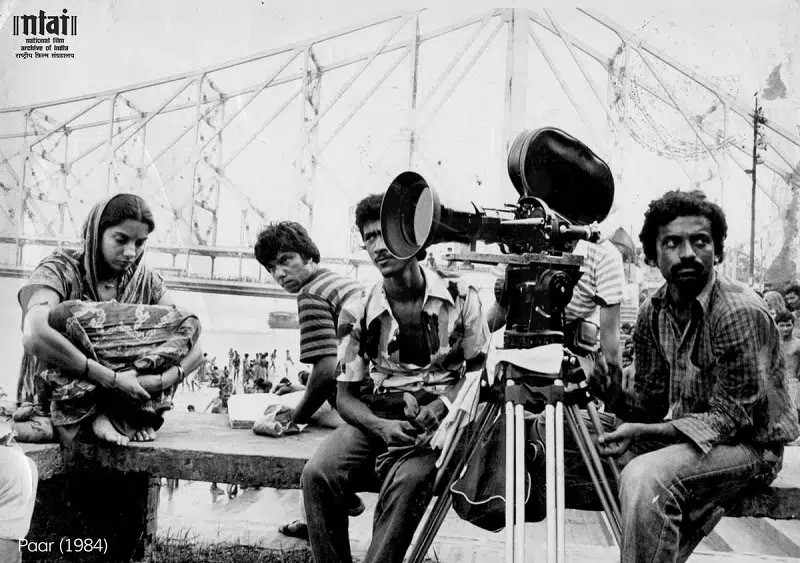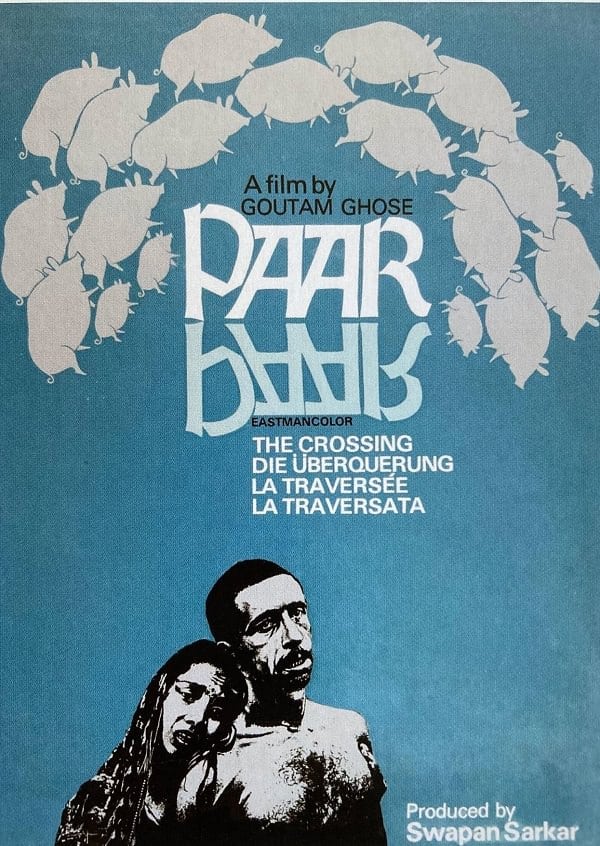
[ad_1]
“The calf is growing
When something moves in the stomach, it is clearly visible.
A couple is strolling on the ghat in Kolkata. The husband lies on the floor with his head bowed. The wife is humming a folk song. In front of them is the mighty Hooghly River. How did the Musahar couple from Magh village in Bihar come to this city? What is their relationship with the river? And what is the story of the “calf” in the wife’s belly?
This scene is from the same film. The film is a film from that period when parallel cinema was popular in India. In the eighties, Bollywood was producing very bad films, while directors like Shyam Benegal, Govind Nihalani, Saeed Akhtar Mirza, Gautam Ghosh, along with actors like Naseeruddin Shah, Om Puri and Smita Patil, painted a unique picture of rural India. The Bollywood of Subhash Ghai and Manmohan Desai was of only one color, but Benegal-Nihalani’s films were different.
Movies like Manthan, Mandi, Hazar Chaurasiki Ma, Aakash, Ardhasatya, Drohkal etc. have brought Indian cinema closer to secular reality. There is a brick in that wall.

Naseeruddin Shah and Sabana Azmi. Both are very urban. Financially and intellectually members of upper class families. On the other hand, these are the villagers played by Mushal, the poor, the downtrodden and the oppressed. When the film was screened at the Czech Kolovreviy International Film Festival, director Gautam Ghosh was asked during the Q&A, “How did you find the villagers who behaved so well?”
When I mentioned this at the Thamel Guest House in Kathmandu a few years ago, Ghosh laughed. “When I told them they were popular actors, they were surprised,” he said. During that meeting, I also asked director Ghosh how he came up with the idea of making this film. Then he said, “There was a magazine published in Kolkata at that time – The Sunday. The editor was M.J. Akbar. (M.J. Akbar later entered politics, first as a spokesperson for the Congress Party and later as a spokesperson for the BJP. He also became a Union minister, but lost his position due to allegations of sexual abuse.) In the magazine, I read a story about an upper-caste man who had fled to Kolkata after his house was set on fire by the Musahar people in Bihar. After reading their story, I wanted to make this film.
The protagonists of the film are on an endless journey from the beginning. They are on the run. These simple villagers tore up the letters written in the name of unidentified people and fled to the metropolis of Kolkata to save their lives. The fire that burned in the house when they ran away from home still burns in Nauranga’s eyes.
This is the story of the film. Nauranga and Rama, the couple escaped from the manger and came to Kolkata. Carrying the tragedy of the village. There was deep sadness and fear in his eyes. There was no “organic” and “environmental” as described in the village poetry. There were landlords, exploiters, feudal lords in the village. The big ego of the big caste people. There was a teacher in that village – Marxism in thought and Gandhism in practice. Who gradually ignited the fire of rebellion in the hearts of the poor Mushals. He taught the villagers that money lenders must pay the wages set by the government. A sentence in his life became the master’s mantra in the hearts of the young people in the village – everyone should follow the rules of the government, and money lenders and Mahajans cannot be above the government!
How did the fire in the village start? It frightened someone, just like Hanuman whose tail was on fire, how far would Nauranga go to put out the fire in his heart? And finally, how do you go to Hooghly with 36 pigs? Par tells the story of Nauranga and the race of Rama.
I should also mention here that since this movie was made forty years ago, I have discussed its story in detail in this article. If you have not seen the movie and are interested in watching it, I suggest you read this article after you have watched the movie.
****
June is the month of farmers. The month when the land is sown to grow food for the whole year. Yet, in this month, workers riot – employers don’t pay the government-mandated wages, and this is unjust. You have to fight it. Nauranga told his family at dinner that night: “Starting tomorrow, no one will go to work.” Then his father said: “If you don’t go to work when you need it most, what will you eat all year?”
Then the root of the problem lies in this “compulsion”. Even if the owner exploits or cheats, the wages he pays are the only source of income for the workers. These Musshars do not have their own land. For a long time, Dalits were illiterate because education was prohibited in society. The government did not give any other jobs. No one was watching them, no one was on their side. In this case, what would the poor Musshars gain by rebelling? If they do not rebel, how can they get rid of the constant exploitation, oppression and tyranny? Generation after generation of poor people are spending their lives in this gap.
Nauranga led a rebellion to leave. Moreover, this required the sacrifice of some people. There were also counter-arguments. Balia Banga could not tolerate the rebellion of small people.
****
The protagonists of the film are on an endless journey from the beginning. They are on the run. These simple villagers tore up letters written in the name of unidentified people and fled to the metropolis of Kolkata to save their lives. The fire that burned in the house when she ran away from home still burns in Nauranga’s eyes. There is no news of her parents. It is not clear whether her parents were burned to death in the house, just like winter insects and grasshoppers in the forest fire. In addition, Rama has something in her belly that needs to be protected – the child.
When they finally dragged the pig across the river, they stared at each other for a while, and when they saw another gap in the river, Nauranga’s consciousness flew away. It seemed that life was like this. He thought he had passed through a large herd of cattle, and another larger herd was waiting. Isn’t human life just like the endless race of Nauranga and Rama? Like a tired traveler, constantly walking, not knowing the goal and destination!
The couple had a son named Budhwa. One day, he fell into the village well and ended his life. However, Rama still called her husband only as “Budhwa ke Bapu”. He felt Budhwa returned to his arms.
And, on the banks of the Hooghly, the couple wandered together for a while, not running away, not looking for anyone in the scene described at the beginning. Rama was singing the folk song “Budhwa Ke Bapu,” telling her that the baby was growing and moving. For the first time, there was peace on his face. This was the peace of realization, the realization that you cannot get anywhere by running away. The light given by the knowledge of the truth is that no matter how you run away, you must return to your own place.
They are now back in the village. He wants to meet his father-in-law. The Mahajan people come to this ghat to give them work to pay the necessary expenses. They don’t know what the work is.
****
One of the most poignant scenes in the film is when Nauranga and Rama lead 36 pigs across a river. Pigs are considered impure, so no boat can take them. So, people have to wade through the river to push them across.
For Nauranga, who had not eaten for three days, the 20 rupees salary was a lot of money. Rama didn’t want to do this job. Before he even entered the water, the cold had already invaded his heart – what if something happened to the baby swimming in such a big river?
Nauranga insisted. He had no choice. What does one do when all the roads are closed? He does what he has to do.
Naseeruddin Shah worked very hard for this scene. He learnt the art of herding pigs. They all learnt the words to call the pigs, the words to bark. Shabana also learnt the language,” Gautam Ghosh told me. Their hard work and acting skills are fully reflected in this scene. Please watch the film again, it is also available on YouTube.
There are some amazing images and symbols used in the film. For example, Nauranga and Rama’s first son drowned in the water. Now they drown their unborn child in the water.
When they finally dragged the pig across the river, they stared at each other for a while, and when they saw another gap in the river, Nauranga’s consciousness flew away. It seemed that life was like this. He thought he had passed through a large herd of cattle, and another larger herd was waiting. Isn’t human life just like the endless race of Nauranga and Rama? Like a tired traveler, constantly walking, not knowing the goal and destination!
There is another strange thing in this scene. When they reach the second shed, Mahajan, who is sitting opposite, says, “It is the same. There is also a pregnant pig. It will be difficult to save her.” As soon as we hear this conversation, we think of Rama. Not only one but two pregnant mothers were found in this shed. If they can make it through, life is possible, otherwise Huabi will be washed away and drowned in the waters of the Ganges!

Mahajan paid their wages. For those who had no food or lodging for several days, he would arrange it. That night, it rained heavily in the village. It was the first time that the couple hugged each other. When you see this scene, you will feel that even if there is a crisis, even if there are bad situations, the love between people will not die. Even if a person’s heart is hardened by time and environment, it will become angry. And no matter how bad the times are, there will always be someone who can bring peace to a person.
At the end of the film, when Rama said that the child stopped moving in the womb, the audience felt a chill. Nauranga rushed over, making the audience realize once again the compulsive nature of human beings.
What happened to the child? The film doesn’t go into detail about how the lives of these two sad people progressed. He gestures and leaves.
 A couple who ran away from home to save their lives eventually had to return to the same house to save their lives. After all, how far can a person run? Can problems be solved by running away? The film leaves such questions. It also shows that the fight to end social discrimination is not easy.
A couple who ran away from home to save their lives eventually had to return to the same house to save their lives. After all, how far can a person run? Can problems be solved by running away? The film leaves such questions. It also shows that the fight to end social discrimination is not easy.
The film brought to the big screen the life of Dalits in a small village in a corner of India at the time. Satyajit Ray’s film Sadgati and Gautam Ghosh’s Par did just that. Sadgati starrer Om Puri was also in Par. Actors like Uttapal Dutt and Mohan Agase also made an appearance in it.
Even after forty years, think about how much the living standards of Dalits in this region have changed. Aren’t people still discriminated and oppressed by caste and class? Are barriers of discrimination and exploitation greater than Hooghly and Ganga no longer blocking the path of those who walk on the path of equality? And, as this film shows, are people less obsessive? And the question raised above is – is it possible that the resistance of the weak will make him weaker? What will the weak do? The answer can be – more fierce resistance and resistance.
[ad_2]
Source link


